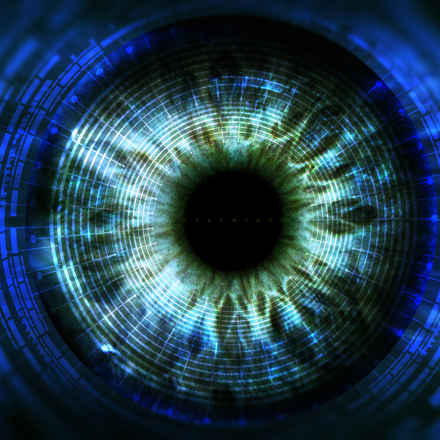New technology could lead to insights into causes of macular disease
Posted: Wednesday 02 December 2020
A study at the University of Southampton has used new imaging technology to make a digital reconstruction of eye tissue, which could provide new insights into the causes of irreversible blinding diseases.
In this study, funded by the Macular Society and published in the International Journal of Molecular Sciences, researchers used a newly-developed imaging technique to produce a digital reconstruction of eye tissues from the outer retina, at very high resolution. This is the first time this technology has been used to fully reconstruct cells from the retina and could provide new insights into the causes of conditions such as macular disease.
The retinal pigment epithelium (RPE) plays a critical role in vision by looking after the photoreceptors. Scientists currently do not fully understand the causes of damage to RPE cells that leads to sight loss. The reconstructions produced in this study provide a clear picture of the RPE in a healthy eye, which will be a crucial reference point for scientists to look at how the cells change with age and in diseased eyes.
The research team, led by Dr Arjuna Ratnayaka, a lecturer in vision sciences at the University of Southampton, used the imaging technique, called serial block face microscopy, on the retina of mice. The process involved a state of the art microscope capturing digital images of hundreds of serial layers of the retina. The team then began drawing key regions of interest (such as the cell body and the nucleus) in each scanned layer before advanced computer software made the images into a full 3D reconstruction.
Dr Ratnayaka said: “We now understand the technical process required to produce such high resolution 3D reconstructions of retinal tissues which is an exciting foundation to carry out further studies into deteriorating cells in the eye. The use of artificial intelligence software will make this process faster in the future."
The researchers now hope that further understanding of RPE deterioration can come from using the technique to study mouse models of retinal degeneration, as well as well?preserved healthy and diseased human donor eye tissues.
Geraldine Hoad, research manager at the Macular Society said: "Macular disease is the biggest cause of sight loss in the UK, yet there is still no cure. For most types of the condition there is not even a treatment. This is an exciting development, which could help speed up researchers' understanding of the condition and ultimately bring us closer to a cure for the condition which affects the lives of so many people."
Some images of the 3D reconstructions can be viewed in the paper.
